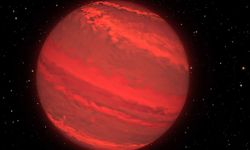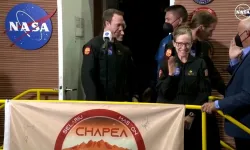According to NASA, scientists have found mathematical evidence that suggests there could be a "Planet X" in the solar system.
This hypothetical planet, the size of Neptune, orbits our Sun in a very long orbit far beyond Pluto.
The object, which researchers have dubbed "Planet Nine", could have a mass about 10 times that of Earth and orbit an average of 20 times farther from the Sun than Neptune.
A full revolution around the Sun could take between 10,000 and 20,000 Earth years.
EXISTENCE IS NOT CERTAIN
NASA's announcement does not mean that there is a new planet in our solar system.
The existence of this distant planet is only theoretical for now, as no direct observations of the planet nicknamed "Planet 9" have been made.
Astronomers are now searching for the mathematically predicted planet.
WHEN WAS THE "9TH PLANET" FIRST PROPOSED?
In January 2015, Caltech astronomers Konstantin Batygin and Mike Brown announced new research providing evidence that a giant planet follows an unusually wide orbit in the outer solar system. This prediction is based on detailed mathematical modeling and computer simulations, not direct observation.
"The possibility of a new planet is certainly an exciting thing for me as a planetary scientist," said Jim Green, director of NASA's Planetary Science Division.
"But it's too early to say with certainty that Planet X exists. What we're seeing is an early guess based on modeling from limited observations. This is the beginning of a process that could lead to an exciting outcome."
Scientists believe that Planet X could be similar in size to Uranus or Neptune, with a mass about 10 times that of Earth.
It would take 10,000 to 20,000 years for this new planet to make just one full revolution around the Sun.
WHAT WILL THE PLANET BE CALLED?
Scientists have named the hypothetical object "Planet Nine".
But the real naming rights of a planet belong to the person who actually discovers it.
"Planet X" was the name used in previous predictions for the long-suspected giant, undiscovered planet beyond Neptune.
If the predicted world is found, the name would have to be approved by the International Astronomical Union. Planets are traditionally named after mythological Roman gods.
WHY IS IT THOUGHT TO BE THERE?
Astronomers studying the Kuiper Belt have noticed that some dwarf planets and other small, icy celestial bodies tend to follow orbits that cluster together.
By analyzing these orbits, scientists predicted the possibility that a large, previously undiscovered planet could be hiding far beyond Pluto.
They speculate that the gravity of this potential planet could explain the unusual orbits of Kuiper objects.
WHAT'S THE NEXT STEP?
Astronomers will start using the world's most powerful telescopes to search for the object in its predicted orbit. Any object this far from the Sun will be very faint and difficult to detect. But astronomers think it could be seen using existing telescopes.















